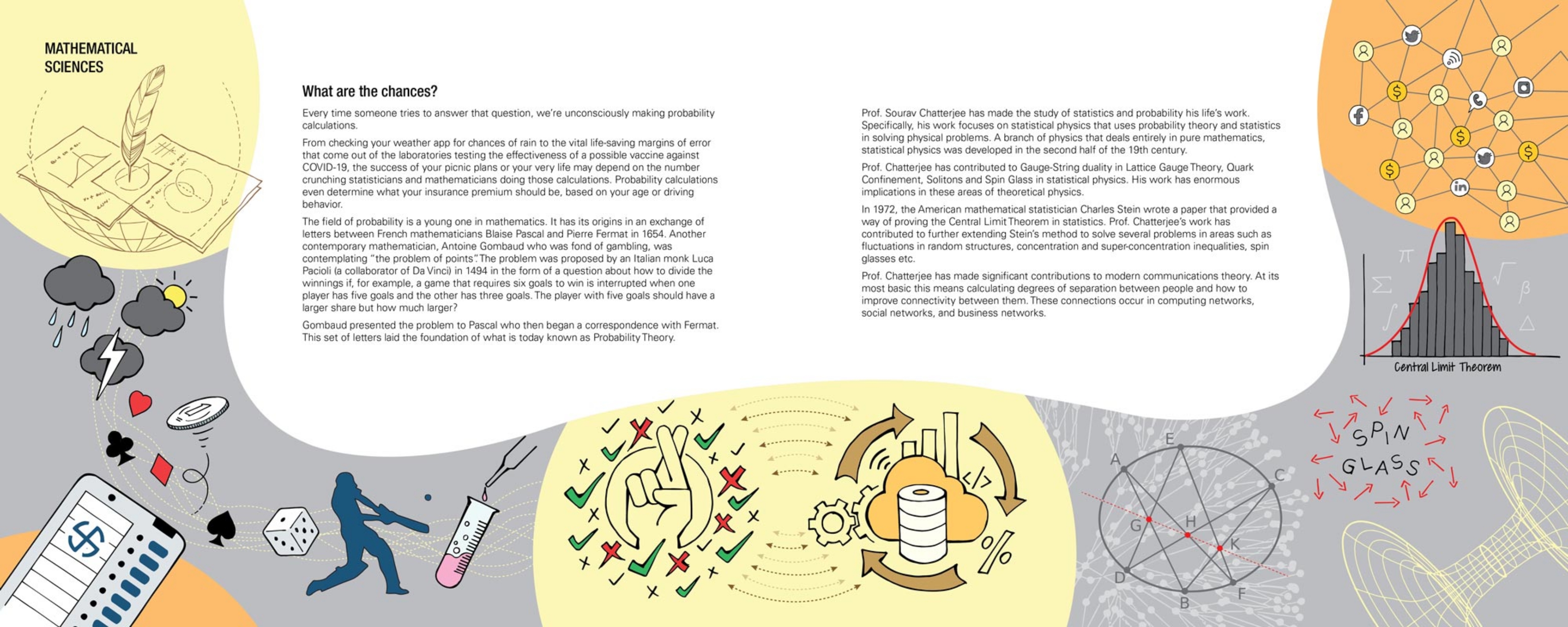The Infosys Prize 2020 in Physical Sciences is awarded to Prof. Arindam Ghosh for his development of atomically thin two-dimensional semiconductors to build a new generation of functional electronic, thermoelectric and optoelectronic devices. He has probed new quantum phenomena in graphene with conductivity noise and created a new platform for light-matter interaction that impacts quantum technologies and sensing in a fundamental way.
Infographic:
Living In A Material World
Scope and Impact of Work
Prof. Arindam Ghosh is one of the key contributors to the global development of the field of ‘two dimensional materials’ and has made several discoveries that have advanced both fundamental concepts and domains of application.
Prof. Ghosh’s work on light-matter interaction with layered materials has placed his group among the leading global researchers in this topic. His discovery of a new physical mechanism to convert light into electricity using hybrid structures of graphene and molybdenum disulphide kick-started the new field of two-dimensional optoelectronics. These heterostructures can achieve conversion of light into electricity that is nearly ten billion times more efficient than bulk semiconductors, such as silicon.
Ghosh’s work represents, a paradigm shift in optoelectronics, where unique properties of graphene and other layered semiconductors could be synergistically combined to achieve massive optical gains. The ability to detect very small intensity of radiation is of paramount importance because of its applications in photography, low power communication, optical sensing as well as in defense and security. Prof. Ghosh’s many recent works on this topic cover new materials, and extend to infrared light as well as aim to achieve single photon detection.
Graphene, and its multi-layer descendants, also have novel properties that are of great interest to our fundamental understanding of the role of quantum mechanics and quantum entanglement in many-particle systems. One of these is the prediction that there should be electrons that can flow on the edge of a graphene flake without any resistance. Arindam Ghosh’s development of the technology of ultra-sensitive detection of electromechanical response and electrical noise at very low temperatures has allowed the first direct detection of such electrical currents on a zigzag edge of graphene.
Bio
Prof. Arindam Ghosh is a Professor of Physics at Indian Institute of Science, Bengaluru since 2017. He obtained his Ph. D. from IISc in 1999 and was a Post-doctoral Research Associate at the University of Cambridge, UK till 2005 before joining IISc as Assistant Professor in 2005.
Prof. Ghosh’s work has been recognized by way of election to the Fellowships of the Indian Academy of Sciences (2015) and Indian National Science Academy (2017) . He was awarded the Swaranjayanthi Fellowship (2008) and more recently, the J. C. Bose Fellowship of DST (2018).
Ghosh’s awards include the DAE Raja Ramanna Prize Lecture in Physics of JNCASR (2017), the Oxford Instruments Young Nanoscience Award (2016), the P. K. Iyengar Memorial Award for Excellence in Experimental Physics (2016), the Shanti Swarup Bhatnagar Prize (2012), and the Materials Research Society of India Medal (2012).
Timeline
Jury Citation
Prof. Arindam Ghosh has realized an atomically thin composite of graphene and molybdenum disulphide (MoS2), which displays unprecedented sensitivity in converting optical radiation into electric current, with a sensitivity about ten orders of magnitude higher than the extensively used silicon photodetectors. His group has unraveled the mechanism of this photodetector, and shown that it is conceptually distinct from conventional technology of p-n junction diodes in silicon.
Prof. Ghosh has also developed the technology of the measurement of very weak electrical signals down to millikelvin temperatures. This has allowed direct detection of electrical currents flowing along the zig-zag edge of a single layer of carbon atoms known as graphene. Ghosh has developed new technologies for detecting thermoelectricity in atomically thin van der Waals heterostructures, promising new insights into the electronic structure of the many new heterostructures now being discovered.

Prof. Arindam Ghosh reacts to winning the Infosys Prize
“Prof. Ghosh congratulations! We were very impressed with your work in a new way of converting particle radiation into an electrical current. This magnificent jump in sensitivity that you have achieved compared to silicon photo detectors is not only interesting from the basic physics point of view but may also have some applications in the future. You are the first winner in experimental condensed matter physics of the Infosys Prize in Physical Sciences. We hope your win will inspire more young people to take up experimental physics.”



